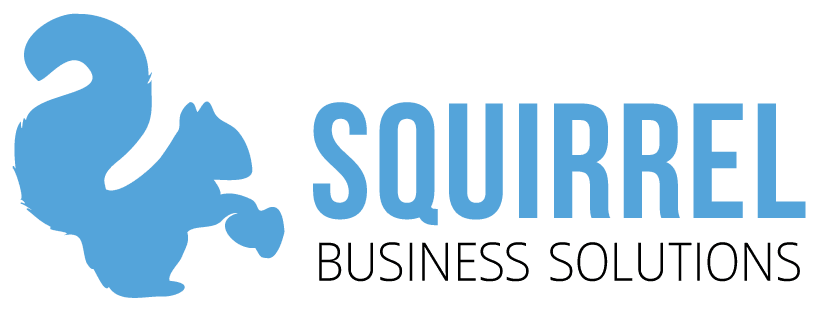Guest post by Lachlan Still
Have you had a stop-start or love-hate relationship with Google Ads?
Do you find yourself saying, ‘It’s too expensive’, ‘Cost Per Clicks are way too high’, or ‘Facebook Ads are too expensive and no one buys anyway’?
You wouldn’t be the first, and you certainly won’t be the last.

So how do you make the tech giants work for your business? It’s all in how you do business.
Firstly, let’s look at the cost. The cost itself is just a symptom of a larger issue in your business. Advertising is ultimately a microscope that highlights your organisation. If your company is stuck in chaos, advertising will only serve to magnify the chaos.
Secondly, the devil is in the detail. You need to peel the layers of your business back. Think about your Goals, your time allocation (being busy is not being productive — remember that), your numbers to break even, your numbers to profit, and your numbers in weekly reporting. All of it.
With that being said, how can we drop the costs of digital advertising?
Numbers
If there’s only three numbers you need to know in your business to successfully advertise, it’s these:
- Lifetime Value of a Client (LTV)
- Average Sale Value
- Lead to Sale Rate (Your win/lose ratio)
(Although we recommend knowing all of them!)
Taking into consideration these three metrics, let’s establish your CaC, or Cost To Acquire A Customer. Once you know your CaC, you can determine an affordable testing budget.
As an example, we’ll look at the financial planning industry. We’ll focus on a small boutique financial planning company in Australia.
I will attempt to ‘de-complexify’ their offering.
Looking at the topline, it’s often broken down into:
Ongoing fees (1–3%)
Upfront Fees ($1500–5k with an average of $3300)
Average Client Yearly Dollar Value $5,500 (Based on 1.1% of funds under management total)
First Year $8,900
LTV based on 10 year tenure $58,500
Close Rate is quite high due to the personal sales approach (obviously this would take into account several factors here, including how good you or your BDM team are). We’ve seen averages of 60% close rate. For this example, we’ll be conservative and say 1 in 3.
Now, everyone’s margins are different. However, with the service industry we can safely put in here 30% as a bare minimum.
If we base this on the first year of $8,900, which equates to a profit of $2,670 — that’s our effective break even cost to acquire a customer. Unless you’re on a growth trajectory and you’re happy to pay more.
It’s a great foundation. So, the next metric becomes how do we break down your budget to determine a profitable campaign?
(Hopefully) You guessed it — we work backwards.
Here’s the Magical Step that most people miss:
We have to build a simple financial model so we have targets that we’re trying to hit.
Set very achievable targets.
What do I mean by this? Here’s a simple example.
If we have a 3-step funnel, it might look something like this:
Lead Magnet (value adding)
Download Page — the Survey/Quiz/Checklist then ‘Thank You’ page
Strategy Session request page
Knowing that we can turn, at a worst case scenario, 3 out of 10 into paying clients at a year one profit of $2,670 we’ll need to build a formula that we think will be successful. Once we build that formula, we have clear targets to hit. We’re not going to just put ads up and test. We’re going to have targets and make sure that our financial model works first.
In other words, let’s say that we’re buying traffic from Facebook. Based on past experience we know that Facebook clicks cost on average, roughly, $1.75.
Now I know there’s people out there that are going to tell you that you can get clicks for cheap. But, we don’t care about that. Our goal is both predictability and the correct audience.
So, what does that mean? We need to build our plan based on things we can get predictably and sustainably.
If we know we can get lots of clicks consistently and sustainably at $1.75, let’s start there.
In order for us to break even, we’d need to earn $1.75 per click that we send to our funnel. What, I hear you say? Earnings Per Click? What the hell is that? It’ll make sense in a moment, I promise.
The funnel
Funnel profit per click > = $1.75 > = means greater than or equal to
We said we were using a simple funnel with a download, a quiz, and a strategy booking. Keeping this in mind, there are 3 things we need to consider:
- Lead Magnet Page download rate (CTR)
- Quiz/Checklist Conversion Rate (How many people fill out the quiz — think ‘Will You Retire With Enough Money To Last and Not Need The Pension?’
- Strategy Session requests
Let’s get back to our boutique financial planning firm. If our download page CVR is 30%, our Quiz/Checklist conversion rate is 10% and our average Strategy Session request is 5%, is this going to be profitable for us?
Well, if 2,000 visitors come to our site, that means we’ll have 600 people land on our Quiz/Checklist page based on our 30% CTR.
Now we have 600 people on our Quiz/Checklist page and 10% of those fill out the quiz/checklist, which leaves us 60 people on the final page (Strategy Session Booking) and 5% convert to strategy sessions.
Which leaves us with 3 qualified, ready to buy enquiries.
We know that each sale is worth $2760 profit, off $8,900 revenue for us. We know that we convert 1 in 3, as high as 2 in 3. Is this enough?
The money equation
Taking a closer look, we make $2760 profit ($8,900 Rev) x 1 sales = $2,760 for each 2,000 clicks that go to our website.
This means that we’re making $1.38 per click that comes to our funnel.
Should we run this campaign? Remember our equation from above?
Is $1.38 >= $1.75? It sure isn’t!
So that means we’d lose $0.37 cents for every click we’d send to this funnel. Do you want to lose that amount for every click you get?
Depending on your objective, it might be a brilliant outcome based on the Lifetime Value of $58,500. However, in the short term it’s not ideal, and we ultimately need to be profitable from year one.
Now that we have a basic model we can start to tweak things.
There are multiple levers we can pull in order to make this funnel work. But, in my opinion — it’s definitely worthwhile going live with this funnel as it’s not far off the mark.
Some ideas of things we could do:
- Increase the download conversion rate of the first step. Get more aggressive with the copywriting + split test.
- Increase the Quiz/Checklist conversion rate.
- Increase the strategy session enquiry rate.
- Turn the quiz into a “one time offer” that is a low-ticket item, such as $10 or $25 to pre-determine intent, and then have a basic contact form with just name, email and phone number.
- The easiest to implement: An email sequence with compelling copy to book a strategy session. This has proven time and time again to turn a break even campaign into a wildly profitable campaign.
- Now keep in mind we want to make sure we stick with numbers that have a high probability of success.
- Don’t say you’re going to get a 20% strategy session rate as there’s a low probability that’s going to happen.
Your forecasting gets more accurate over time
The great part about working off a framework is that you can easily measure improvement and know where to put your effort.
Without a planning framework, your marketing will always be ‘start stop’, and jumping to the next best thing without ever mastering one singular platform — whether it’s SEO, Google Ads, Facebook, or Media Buying.
The objective should be predictability in your marketing, otherwise it will only be a mystery.
As I’m sure you can imagine, once you’ve built 5–10 funnels (and we’ve literally built hundreds, if not early thousands) and run test traffic to them and have accessible data, your predictability gets better and better.
To get started, I highly suggest you go through some of your older marketing results, be it offline or online, winning or losing funnels, break them down and reverse plan them.
Questions you could ask:
What was the destination?
What was the click price?
What was the goal for each step?
What was the lead quality like?
Then start to ask yourself, at each step, what could you improve to make that funnel a winner?
The original version of this article was published by Lachlan Still. Lachlan is CEO and Founder of Liquidlabs, which empowers organisations with digital marketing strategies.

